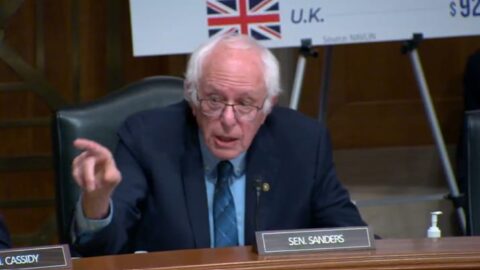In some ways, I’ve given up on my dream that stories about beginning-of-the-year price changes for prescription drugs will be thoughtful. Yes, it would be nice if the stories were used as an opportunity to educate on the difference between list and net prices or — better yet — why those two numbers are getting further and further apart. But I need to live in reality.
That’s why my initial reaction to yesterday’s Wall Street Journal price-hike piece was “meh.” I mean, it’s another low-context effort, but there wasn’t much in the way of hyperbole. I figured I was pretty much done getting worked up about that kind of thing.
(Of note: the WSJ piece uses the updated version of 46Brooklyn’s Brand Name Drug List Price Change Box Score tool, which has price changes through mid-month. If you’re a geek for that kind of thing, it’s worth checking out.)
And then I saw the stories based on the WSJ story, which began to sound less “meh” and more unhinged. See, WSJ put the words “Ozempic” and “Mounjaro” in its headline. That’s a savvy move in a click-based economy.
The problem is that the Ozempic and Mounjaro price increases were fairly modest. Ozember was up 3.5%. Mounjaro took a 4.5% increase. The story didn’t mention Zepbound or Wegovy, but a quick look at the 46Brooklyn Box Score suggests that there weren’t changes in those prices.
By historical standards, those are low list price increases. And we know that net prices are lower than anyone thought a year or so ago (and they’re probably primed to fall even more). If anything, the GLP-1 marketplace is an example of economics at work in a way that benefits patients.
But for clickbait types, seeing Ozempic and Mounjaro in a WSJ headline about price hikes was just too tempting an opportunity to pass up, so there are a zillion truly lazy, terrible pieces out there, sourced to the WSJ article, which — taken together — do some serious damage to our ability to have a sober conversation about prices.
Inc magazine takes the cake, with a headline that screamed, “Prices for Weight-Loss Drugs Like Ozempic Are Skyrocketing. That’s Bad News for Employers.”
I mean, c’mon.
The thing is, you can open the 46Brooklyn Box Score and ask it some really interesting questions that would generate great story ideas. Like: did AbbVie pass up a Humira price increase this year? Or: why isn’t Wegovy on there? Or: why are price increases so much lower this year?
But I guess it’s easier to holler about skyrocketing Ozempic prices, facts be damned.
The commentary continued to roll on the terrible NYT piece from yesterday on why the United States has high drug prices.
I like the succinctness of NPC head John O’Brien’s post on LinkedIn, where he quickly nails a half-dozen reasons why the NYT framing was wrong. In about 250 words, he touches on the R&D ecosystem, the comparative economics of the U.S. versus the rest of the world, the presence of negotiation in the U.S. system, and more.
Worth the read.
I received an even more succinct response from Mark Cuban via email: “All are wrong. It’s the lack of transparency that is the issue with pricing. That’s it. Nothing else.”
My first instinct was dismissive. Sure, transparency is a part of the issue, and it’s especially important in generics (especially specialty generics), where Mark has had such a big impact. But get beyond that and it gets a lot more complicated. The barriers to full-on transparency are incredibly high.
But then I had another think. Set aside practicality for a moment. What would happen if there was full transparency in the branded drug market? Would that solve all the issues?
For starters, it would pop the gross-to-net bubble. There would still be a difference between list and net prices, but the delta would be a lot smaller. And the difference would be driven not by confidential rebates based on revenue maximization but — possibly — on different definitions of value or willingness to pay.
PBMs would be hurt — I’m sure Mark would shed no tears — and some drug prices would probably be higher in a world with less negotiation leverage. But it’s easy to imagine that other prices would be lower as value became a more important variable.
I don’t know how everything would come out in the wash, but it’s hard to imagine that the system would be substantially more expensive than the one we have now. And it would obviously be more understandable for everyone, from the patient to the employer to the physician.
I’m not convinced that it’s transparency and “nothing else,” when it comes to drug pricing, but I’m all for a little more Cuban-inspired thinking around these things.
I don’t think anyone is under the illusion that hauling pharma executives to Capitol Hill is anything other than a show trial, so it’s illuminating to see how pharma companies are pushing back on Bernie Sanders’ effort to call a kangaroo court to order. Sanders is threatening to subpoena the CEOs from Merck and J&J, and both companies shot back with letters (Merck’s is here, JNJ’s is here) explaining exactly why they won’t send their CEOs and what they’re willing to provide instead.
I spent most of the day yesterday staring at this image (from this Nature paper by a team from Boston Consulting Group). It’s a reminder that getting a drug approved is no guarantee of riches. The class of 2023 approvals was huge, but few of those drugs are expected to be blockbusters, and the median peak sales number is about $500 million, which is not — in the context of multi-billion-dollar development programs, a whole lot.
I liked this column by David Wainer at the WSJ which gets to the point that pharma shouldn’t be punished by investors over the prospect of future policy change. The sector may be hamstrung by other factors, but, as Wainer puts it, “it isn’t going to be because Trump threatens to, say, gut Obamacare.”
On the flip side, if there is additional regulation, it could be bad, per a new Vital Transformation analysis done for We Work For Health, of legislation that would expand price-setting under the IRA. The research found that one of the IRA-expansion bills could prompt a loss of more than 200,000 direct life science jobs, which could indirectly impact a million more jobs.
Dan Leonard, longtime DC policy leader and current executive director of We Work For Health, has an op-ed out on how the use of march-in rights to control drug prices is “a colossal big government overreach.”
Public Citizen is nothing if not predictable. Here’s a report laying into industry for the size of stock buybacks, dividends, and executive compensation.
I keep promising not to write about legislation that isn’t going anywhere, but I do feel like the drug-patent bill is worth keeping an eye on. Axios argues that the fact that the effort is backed by the leftward flank of the Democratic party and the rightward flank of the Republications makes it more newsworthy.
BIO is all-in on the ORPHAN Cures Act as a fix to one of the IRA’s more glaring issues, the disincentivization of broad development of rare disease medicines. Here’s a new op-ed in Marketwatch from the group’s CEO making the case.
If this email was forwarded to you, and you’d like to become a reader, click here to see back issues of Cost Curve and subscribe to the newsletter.





